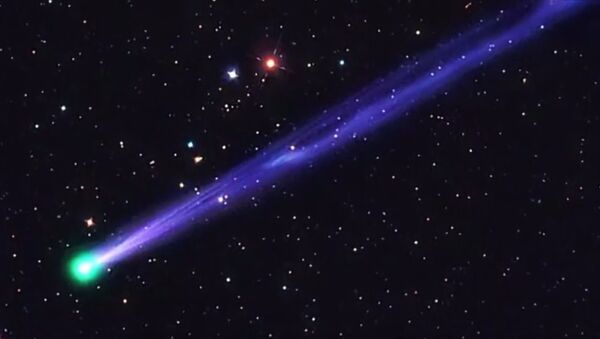Comet 45P/Honda-Mrkos-Pajdusakova, named for the trio of astronomers who discovered it in 1948, revolves around the sun every 5.25 years. At its closest approach it will pass 12.43 million km (7.72 million miles) from Earth. This is a stone’s throw by celestial standards, as Mars is never closer than 225 million km from Earth. 45P’s 2016 approach is the eighth-closest comet to Earth since observations began in 1950.
Small green comet "45P" is approaching Earth, to make the 8th closest comet pass since 1950: https://t.co/kAifFGhVeg #astronomy pic.twitter.com/Ic6QpGICY0
— Alexi Baker (@AlexiBaker) February 6, 2017
With binoculars or a telescope, comet-watchers will have no trouble finding the unique comet racing through the sky at 51,000 mph. From Earth, 45P will appear as a blue-green ball with a fan-like tail.
Comet 45P development. Image Fritz Helmut Hemmerich. pic.twitter.com/JyG5fAkos6
— Con Stoitsis (@vivstoitsis) February 8, 2017
"Proximity makes the comet bright despite its small size," said SpaceWeather.com. "Forecasters say 45P could be on the verge of naked eye visibility… when it emerges into the pre-dawn sky later this week."
Comet 45P/Honda–Mrkos–Pajdušáková Composite of 23 & 27 Dec 2016 Nikon D750 Takahashi FSQ106 @ Jim Denny @kauainightsky #cometobs pic.twitter.com/Lyn2FCUrJi
— Jim Denny (@kauainightsky) January 23, 2017
45P was even closer during its previous approach in August 2011, when it passed 8.98 million km (5.58 million miles) from Earth.
Friday night celestial trifecta…Eclipse of full moon & a comet!#FullMoon #LunarEclipse #Comet45P https://t.co/e2Tb0hAArn pic.twitter.com/Z88xjXkuCc
— Conroe Culture (@conroe_culture) February 9, 2017
In 2015, the similarly green Comet Lovejoy was visible to the naked eye during its approach.

